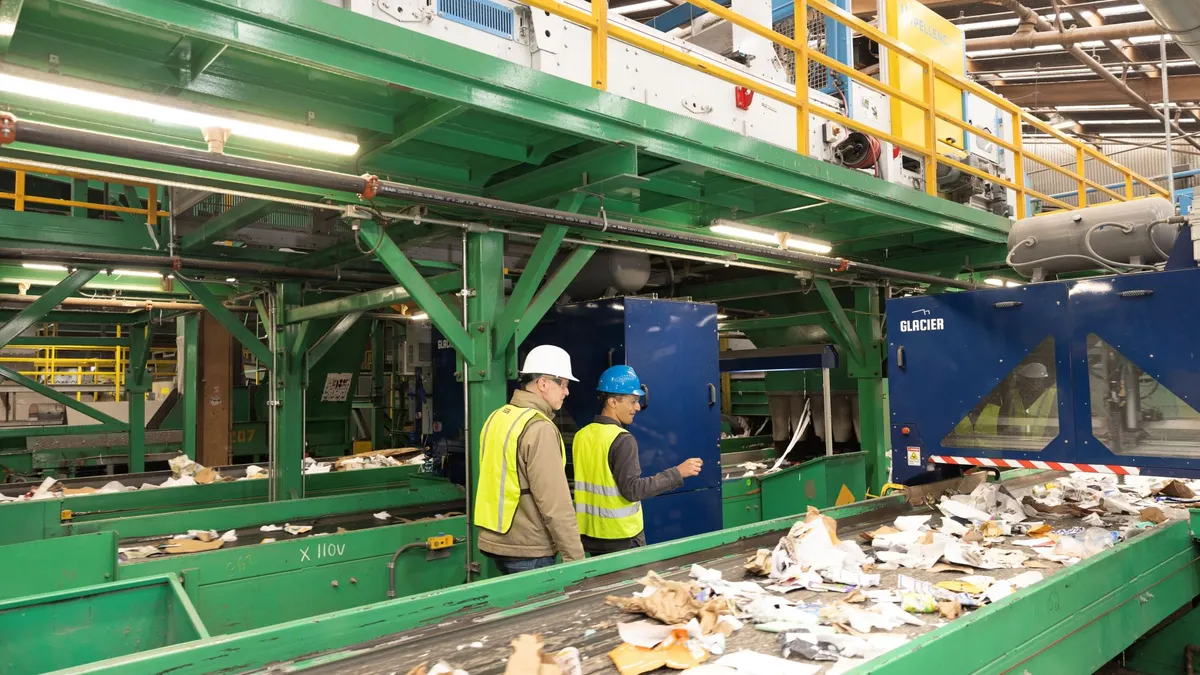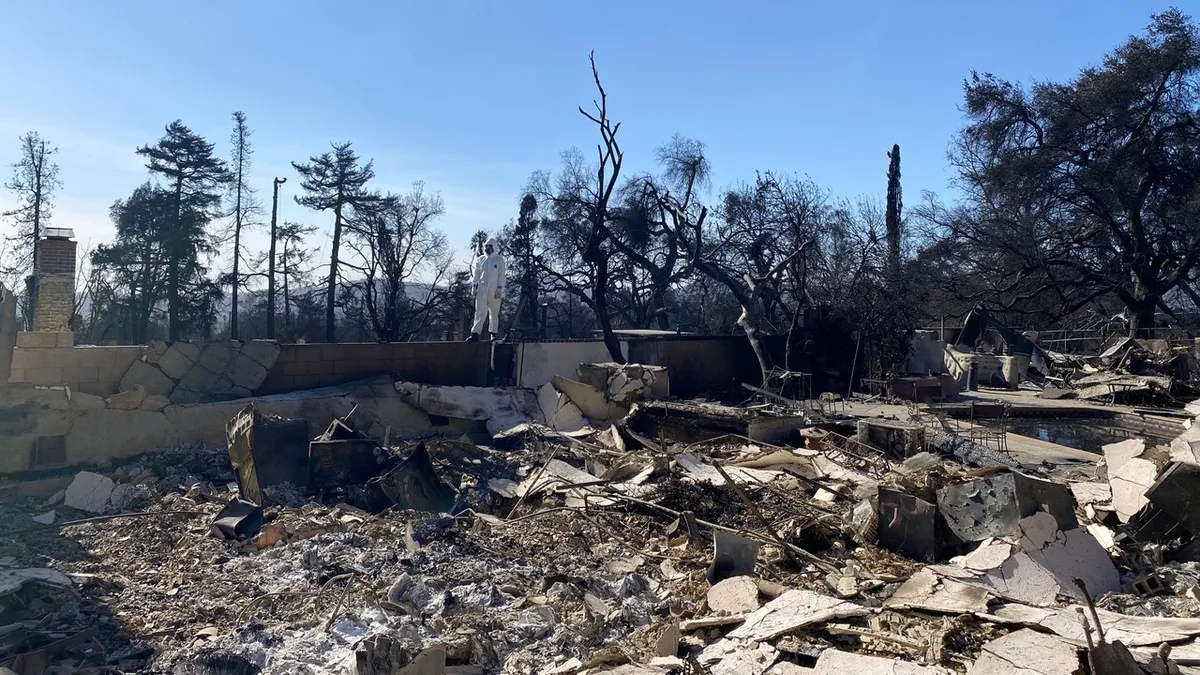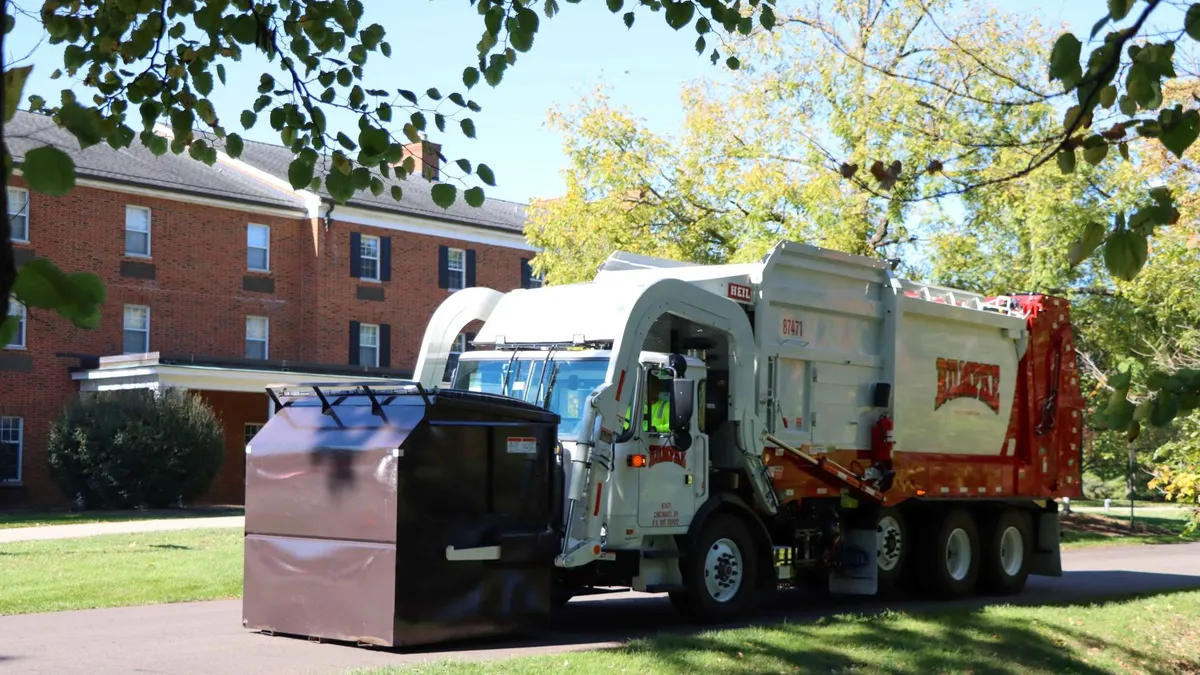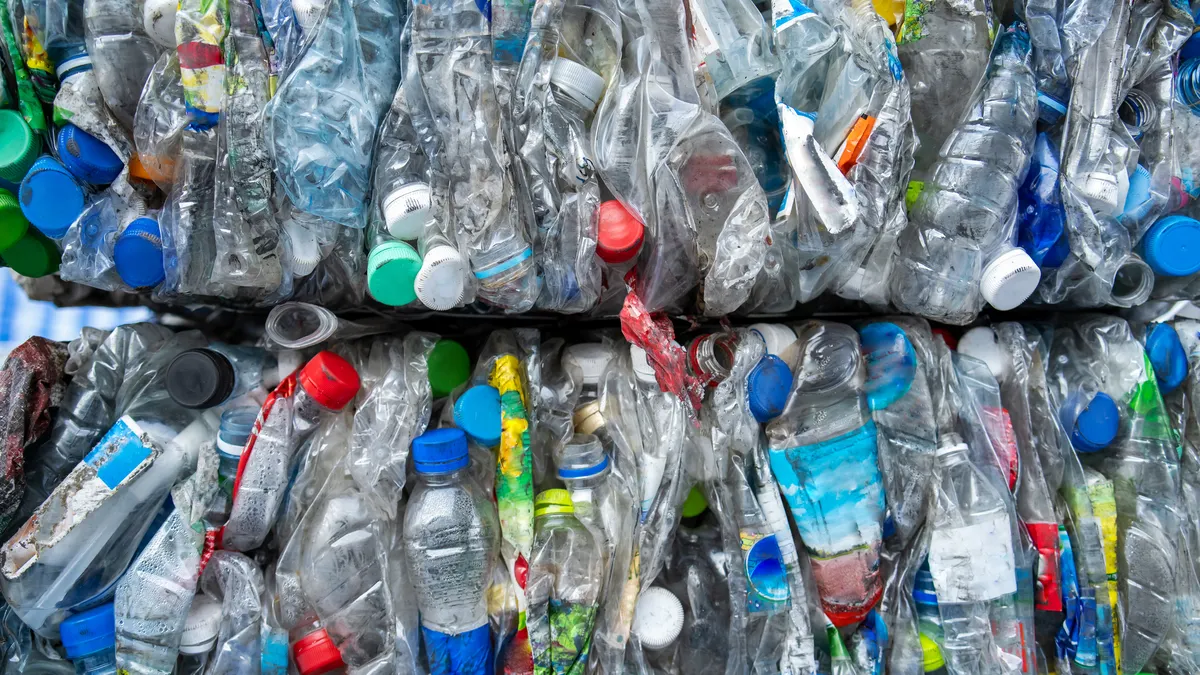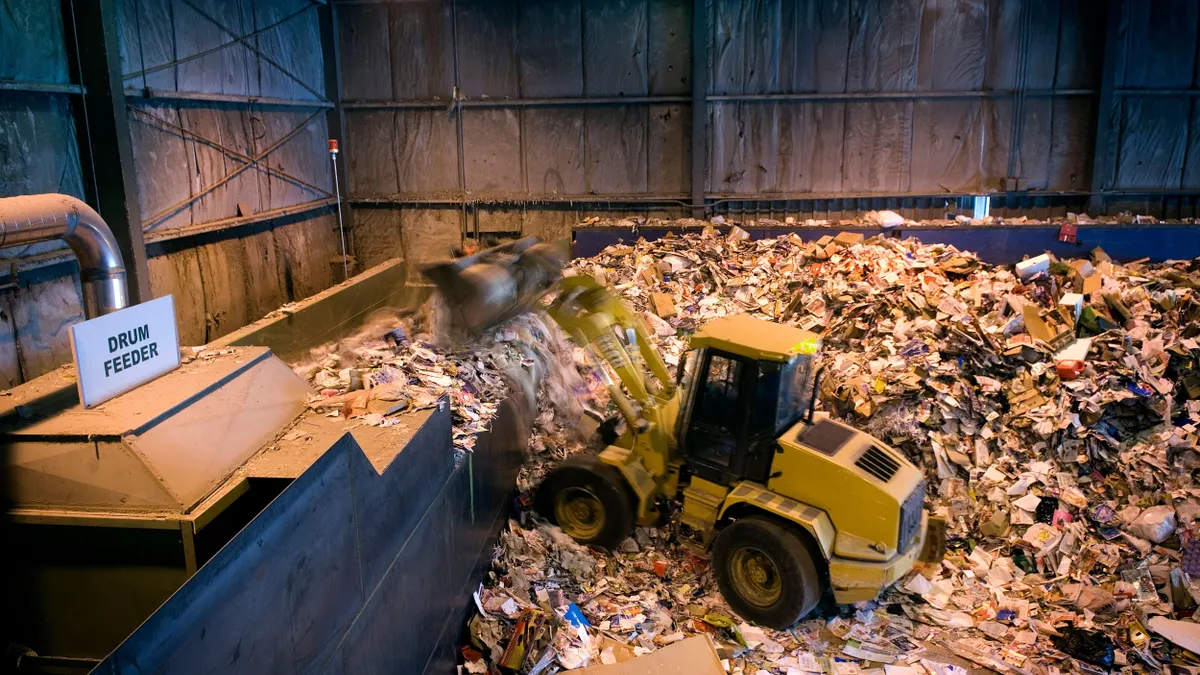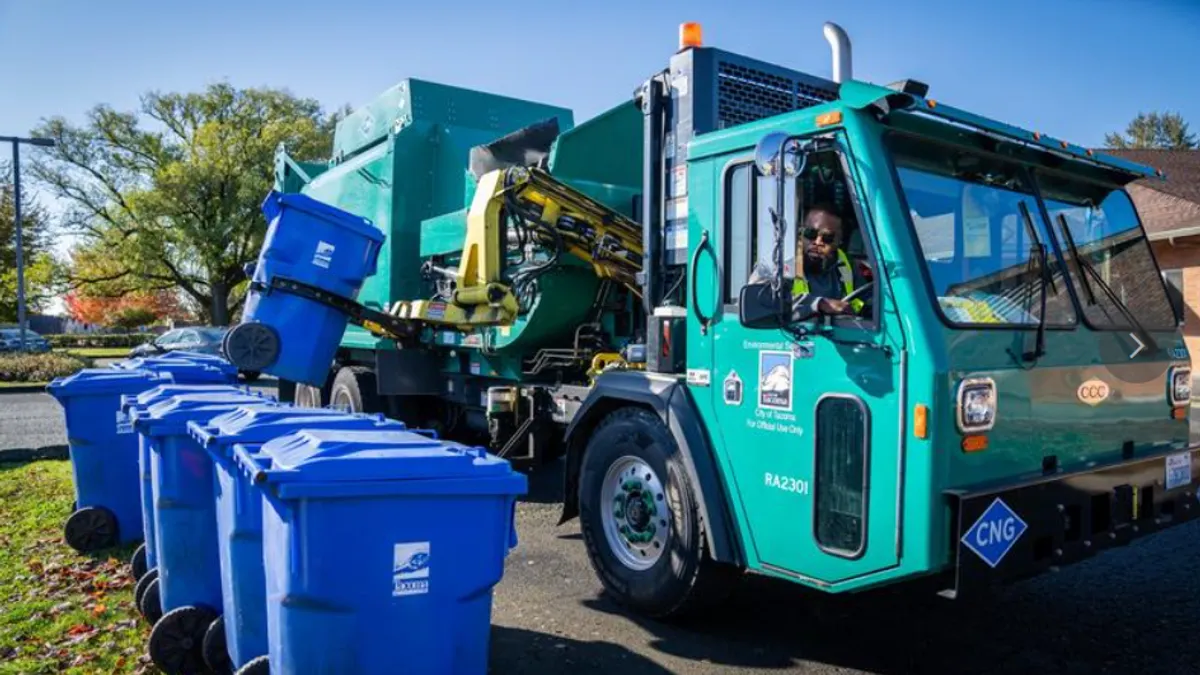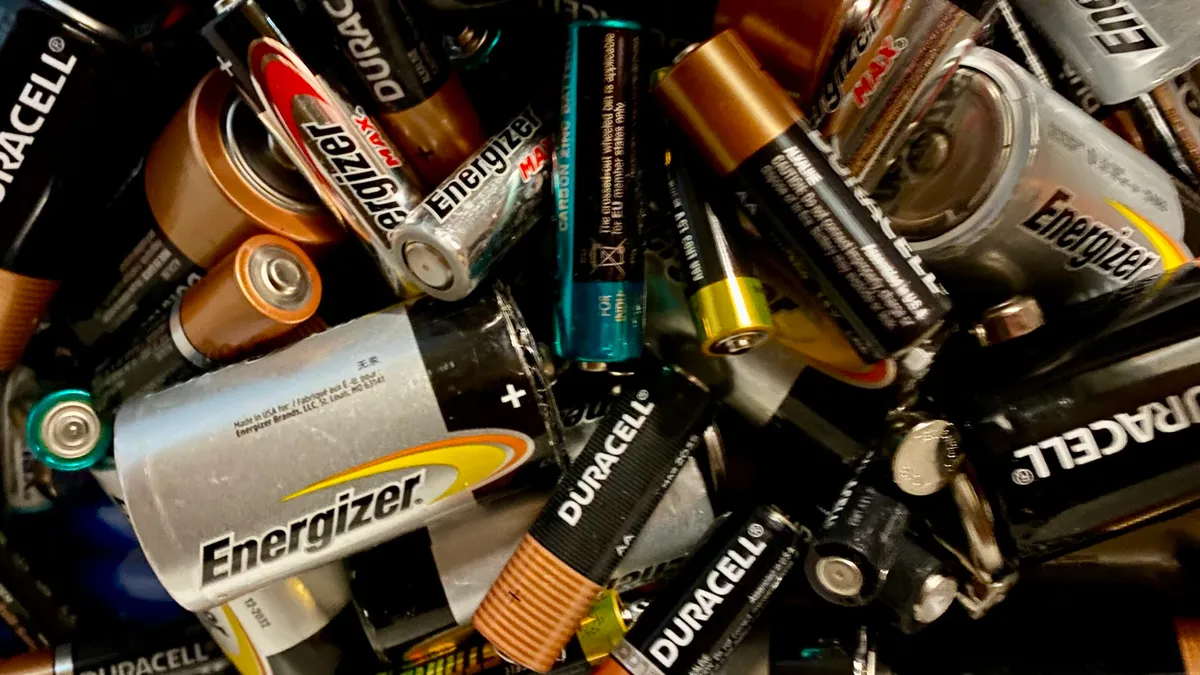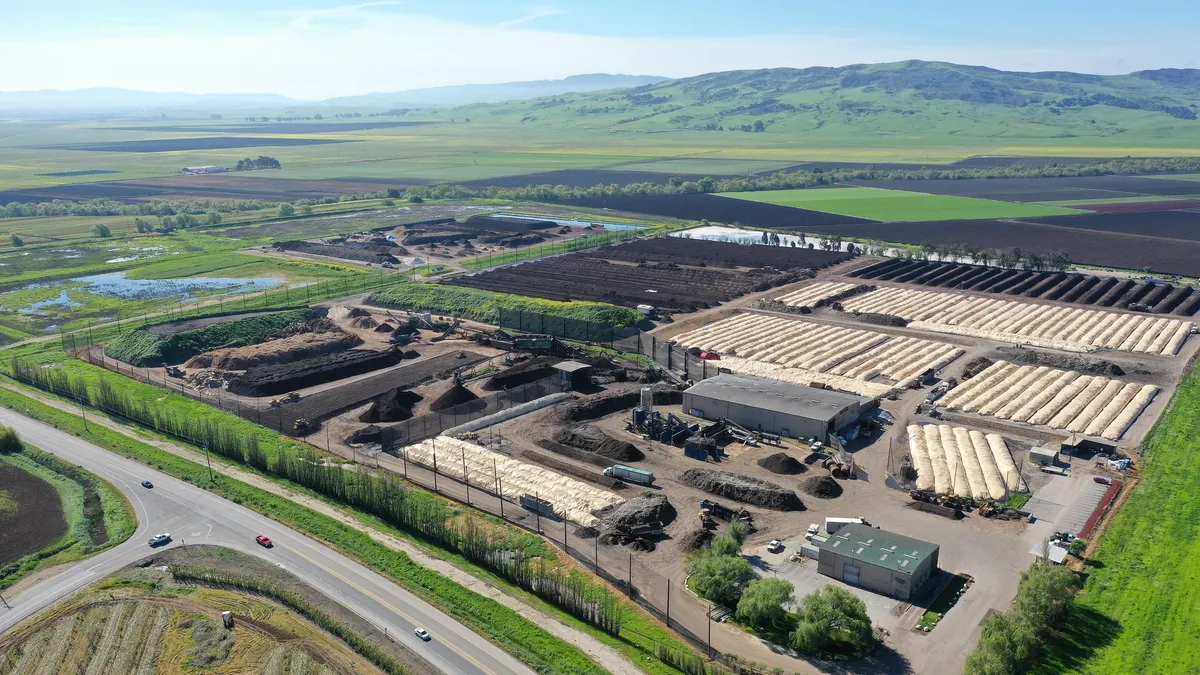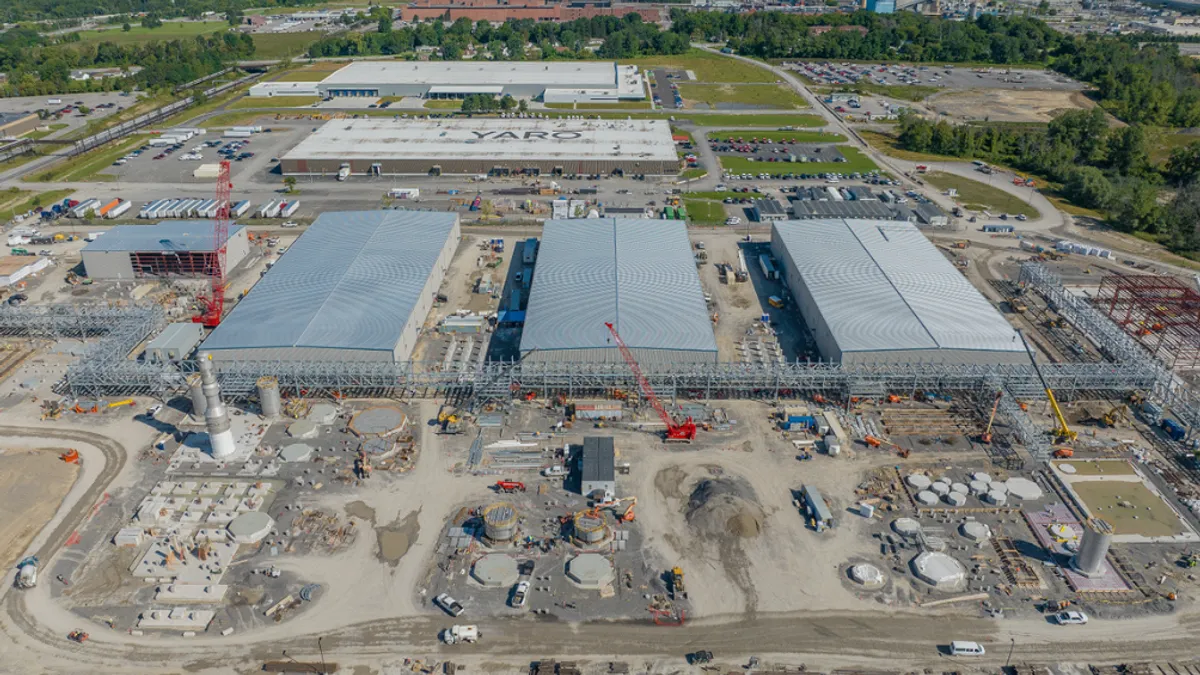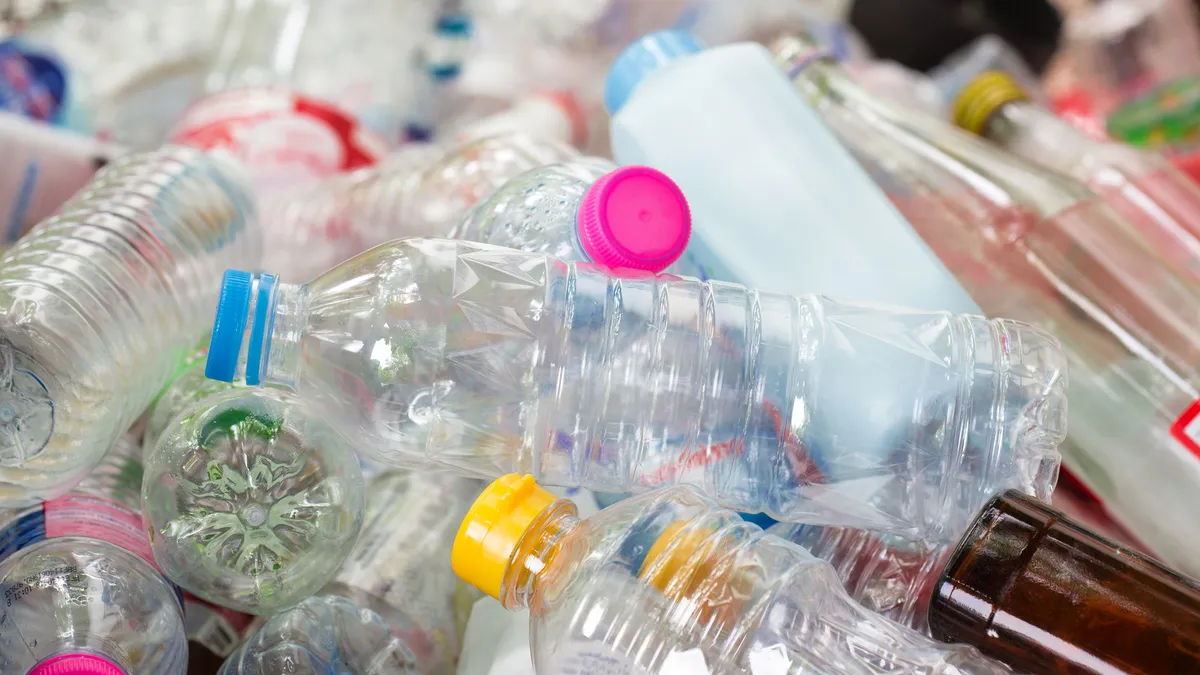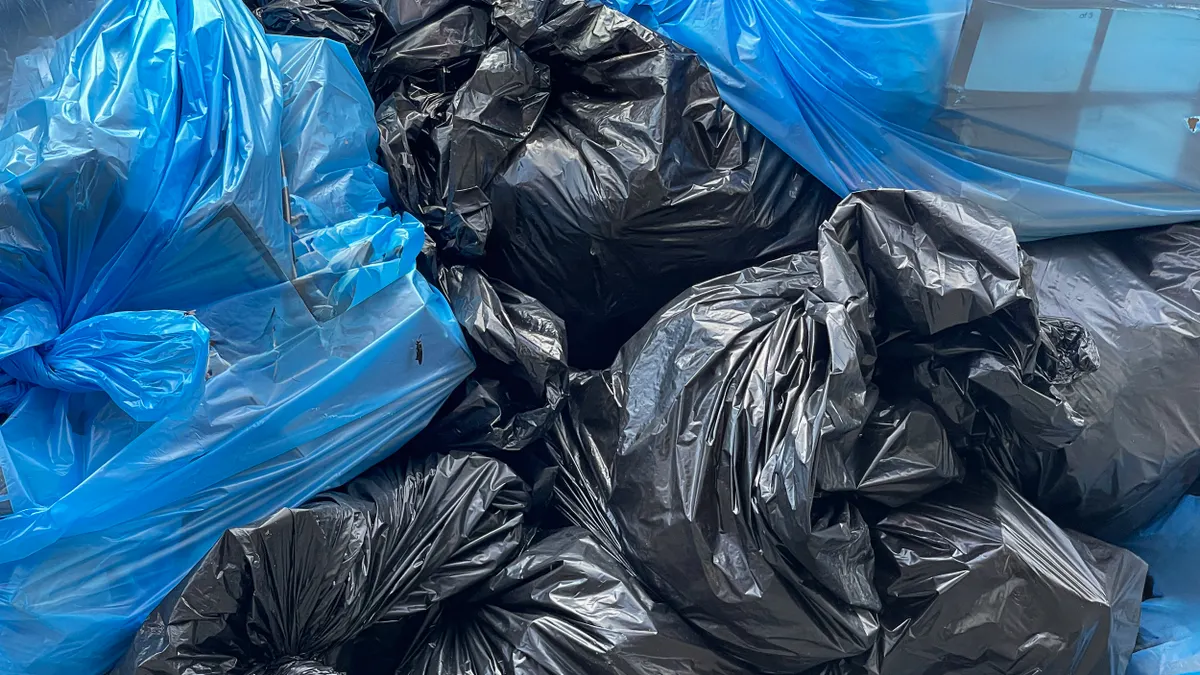Amazon released its first companywide waste and landfill diversion metrics on Wednesday, part of its ongoing sustainability efforts meant to cut waste in every sector of its business.
“We see waste as a defect, and we want to reduce it as much as possible,” said Justine Mahler, director of waste, water and biodiversity at Amazon.
In 2024, Amazon’s landfill diversion rate was 85%, up from 84% in 2023 and 82% in 2022, the company says. Its overall waste diversion rate was 83%, up from 82% in 2023 and 79% in 2022. The company has not stated a goal for overall landfill or waste diversion.
Amazon estimates 83% of its waste in 2024 was recycled or composted, and 2% of its waste was incinerated “with energy recovery,” according to a statement.
Amazon’s broader sustainability and waste reduction efforts have been in the spotlight in the last few years. That’s due part to the company’s name recognition as well as consumer pressure and shareholder resolutions urging the company to do more to reduce its environmental footprint.
Amazon has invested in recycling technology to help achieve some of these goals. Most recently, it partnered with AI-enabled robotics sorting company Glacier to assess the company’s waste streams and pilot Oscar Sort technology to help customers at Amazon Fresh stores correctly sort waste.
Mahler spoke with Waste Dive about the company’s latest recycling and waste diversion work, including packaging reduction efforts, food waste recovery programs that divert good-to-eat food to donation portals and switching to reusable pallets and other durable goods to reduce waste at fulfillment centers.
“One of the cool things about my job is the complexity, which creates a real challenge, right? We’re trying to find recycling streams for chip bags, cigarette butts at fulfillment centers, conveyor belts and servers for AWS data centers. There's so many different ways that we're attacking this problem across many different material streams, many different waste streams. The opportunities make it really, really exciting.”
This conversation has been edited for clarity and brevity.
WASTE DIVE: Amazon recently announced its latest waste diversion and landfill diversion metrics, which encompass all of Amazon’s operations around the world. How does the company track and measure waste for operations on such a large scale?
MAHLER: What's really important is figuring out how we define waste to begin with, and how we think about this ecosystem. Broadly speaking, we define waste as any material that is discarded as a result of our direct operation. That can include everything from our fulfillment centers to our Whole Foods Market stores to our data centers as part of AWS as well as our corporate buildings that house our employees.
We've made a pretty substantial investment to measure our waste at the site level so that we can drive action. We work with over 300 partners that disposition our waste in some capacity. We work with them on not only the operational practices, but the reporting practices, to be able to measure our waste and provide that feedback loop so that we could also have a baseline of our waste use, and also be able to drive improvements year over year.
We invest in software systems and data systems that ingest that information. It brings the data from our waste management suppliers and aggregates information to our different businesses so that we can drive targeted actions. It's really, really important for us to be able to have the level of granularity to be able to drive action.
For the waste and recycling industry, gleaning data from AI-enabled sorting equipment is becoming a big part of operations. Amazon has also recently adopted some similar technology through partnerships with Glacier and Oscar Sort, for example. How does Amazon determine which of these technologies to pursue?
Data management is a big focus for us, and we regularly audit our waste management suppliers for their reporting practices and the accuracy of their data. But the reality is that we need breakthroughs in technology like Glacier that can do this work at greater scale and with greater accuracy.
We want to reduce the amount of contamination that's in waste streams, and so having technology that can more easily identify different material types and pull those out is extremely critical. Upstream, we also want to determine how to fundamentally reduce contamination, or improve sortation processes so that we're not doing as much of that manually.
One of the biggest challenges around sorting is that people need to have a level of knowledge that they sometimes just don't have. The classic example is a cup that looks like it's paper, but it might have a particular coating on it that makes it not recyclable. That's been the challenge of any cafeteria, canteen, office space: What bin do I put it in?
You could imagine a type of technology being deployed in employee cafeterias to reduce that cognitive load and make it super seamless. That also goes for a customer at a store or an employee in a fulfillment center. All of those benefits could be realized by this technology.
In the U.S., recent state laws for extended producer responsibility and food waste diversion are prompting some companies and businesses to change their operations. What impact do these policies have on how Amazon operates?
EPR has been a very steep schema in Europe for quite some time, so we're very experienced on the EPR front as it relates to Amazon’s packaging and reporting on that. The policy environment is very much active at the state level as it relates to EPR in North America. A lot of our packaging efforts — like eliminating packaging or optimizing for paper packaging over plastic where possible — generally aligns with the EPR scheme of reducing the fees and driving toward more recyclability.
Meanwhile, grocery is a very, very important business to Amazon, whether it's Whole Foods Market or our Amazon Fresh offerings. We do have the public commitment to reduce food waste by 50% by 2030. Food waste is always very challenging.
In the waste hierarchy, you want to prevent it from even happening, right? We're constantly trying to optimize the amount of inventory that we have, to make sure that we've got the right amount to match customer demand, but not in excess that could potentially drive waste.
When we do generate waste, we focus on increasing our composting services, as well as food donations. Last year, across our grocery businesses, we donated the equivalent of 81 million meals that would have alternatively gone to waste. In our online marketplace, we donated the equivalent of 58 million meals in 2024.
Amazon has also been on a multiyear path to update packaging to be more recyclable and move away from plastic where possible. Amazon has reported both some successes and some stumbling blocks in this realm. What’s the latest on those goals?
We are continuing to make progress on both reduction in total material, but also a focus on transitioning to paper over plastic wherever possible. Our latest lineup of new Kindle devices was largely in paper packaging with a very intentional branded aesthetic that moves away from the high-sheen paperboard to a natural kraft, which is even better from a recycling perspective.
We're partnering with all aspects of our private brands to identify where there's paper packaging alternatives, but a lot of our grocery products are still in plastic packaging, primarily because paper isn't suitable yet to meet the food safety and shelf life requirements. So there are some more inherent challenges in that space.
We're not going to compromise safety of the product just for the purpose of moving out of plastic. But that's also why we've made some significant investments and looking at potentially biobased plastics that can also be curbside recyclable.
The general tenet is we want customers to be able to curbside recycle their packaging. There’s a challenge within film plastics right now where there’s not a lot of options for that. We're making some transitions out of plastic, but there's some real technical challenges. That’s why we're investing both in plastic reduction, but also in enhancing plastics so that they have the same characteristics that people like about paper, which is that it's recyclable.



